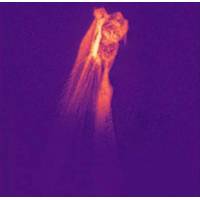
The Quantum Economy
without the issue of drift.”It will likely take several years before these technologies become available for practical applications, says Salavasidis.Meanwhile, the world's first quantum optical microscope was unveiled in Canada this week. Developed by a team of researchers from the National Research Council, University of Calgary, University of Ottawa and beyond, the microscope uses entangled photons to provide ultra-low intensity illumination. By harnessing the power of correlations between single photons, the technology speeds the process and reduces the risk of photo damage while delivering
![“Our province has been shaped by the Atlantic Ocean. It can be extremely cold, extremely unforgiving. If it works here, it will work anywhere. The technology we [develop and] use here can be adapted to anywhere else in the world. We are adaptive, we're nimble, we're problem solvers. And at the end of the day, we are collaborative."
Minister Andrew Parsons, Industry, Energy & Technology, Newfoundland & Labrador, Canada. Photo courtesy the office of Minister Andrew Parsons](https://images.marinetechnologynews.com/images/maritime/w200h200padcanvas/province-been-shaped-153427.jpg)
NL Government Helps Power Regional Maritime, Offshore Energy, Subsea Tech Cluster
for the NATO defense innovation accelerator.”The Co. Innovation Centre: The Co. Innovation Centre is helping to address the tech needs of established companies as well as the new ones that are pursuing remote ops in energy, healthcare, mining, fisheries, transportation and more.The National Research Council: “NRC has an amazing facility in St. Johns that is one of the most advanced indoor model ocean facilities in the world.” Among the facilities are the ability to produce multi-directional waves in extreme temperatures, at extreme sea states, able to generate wind to simulate
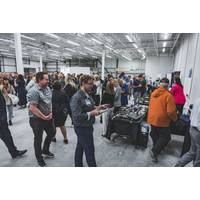
Technology Time - Newfoundland & Labrador Style
in maritime training simulators for lifeboats, fast-response craft and ice management, offering hands-on and realistic training. The harsh environment of the North Atlantic builds the confidence and competence of seafarers, explained President and CEO Randy Billard. Partnering with the National Research Council of Canada and Memorial University of Newfoundland builds expertise for multiple markets, including defense, oil and gas, as well as shipping. Looking ahead, Billard foresees an increasingly digital world requiring technology access anytime, anywhere. “Maritime businesses will have
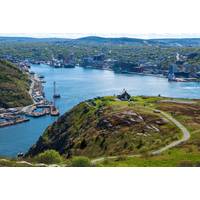
Spaces & Places: Inside the ‘Crown Jewels’ of Newfoundland & Labrador
have] a long history of research into ship safety and offshore structures.”The Centre for Cold Oceans Resource Engineering (C-CORE) is one of the OERC’s partners, originating as a university offshoot with extensive ice research history, particularly in the oil and gas industry. The National Research Council (NRC) of Canada also has facilities in St. John’s, allowing students and professors to utilize its technologies for research. The Ocean Engineering Research Centre (OERC) tow tank. © Celia KonoweLately, OERC’s focus has been on the Artic and related environments,

Deep Dive Talks with Dr. David Murrin, Director General of the NRC's Research Center
Join us on Deep Dive as we talk with Dr. David Murrin about his role as Director General at The National Research Council Canada (NRC). NRC partners with Canadian industry to take research impacts from the lab to the marketplace, where people can experience the benefits. This market-driven focus delivers innovation faster, enhances people's lives, and addresses some of the world's most pressing problems. Listen in and learn more about the amazing work going on at the NRC!
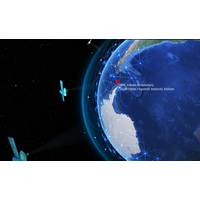
Canada and Spain Scientists Establish Antarctic Ocean Observatory
a subsea observatory at the Spanish Antarctic Station, providing year-round, near real-time data on ocean conditions there. This is the first time that ONC will extend its ocean monitoring outside Canadian waters.This partnership between ONC, a University of Victoria initiative, and the Spanish National Research Council (CSIC) will advance scientific understanding of one of the most underobserved parts of the planet, the Southern Ocean, or the Antarctic Ocean.The Spanish polar research vessel Hespérides that is transporting the ONC observatory is enroute to the Spanish Antarctic Station (BAE), Juan
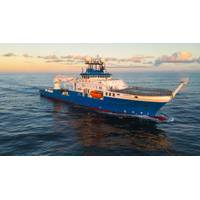
Schmidt's Newly Refitted Research Vessel Falkor (too) Launched
community.In 2021, Schmidt Ocean acquired the M/V Polar Queen and began its metamorphosis from an offshore industry vessel to a scientific research vessel. Built in 2011 Falkor (too) is 30 meters longer and 30 years younger than the original Falkor, which was donated last March to Italy’s National Research Council (Consiglio Nazionale delle Richerche

Lobsters Versus Right Whales
overboard.Environmentalists and recreational anglers accused the fishing industry of endangering popular sport fish, such as red drum and spotted trout. But sea turtles, which often were found in the same coastal waters as shrimp, became critics’ poster animal. A 1990 report from the National Research Council estimated that shrimping killed up to 55,000 Kemp’s ridley and loggerhead sea turtles yearly.Federal regulators initially proposed voluntary use of turtle excluder devices, or TEDs – small trap doors in fishing nets that could allow captured turtles to swim free. In 1987, the

Ashtead Technology Develops Optical Chain Measurement System
vision algorithms, Ashtead Technology’s new optical CMS reduces chain measurement time by more than 50% and provides real-time results.The development of Ashtead Technology’s new optical CMS was supported in part by advisory services and research and development funding from the National Research Council of Canada Industrial Research Assistance Program


 February 2025
February 2025





